When we think of zebras, their striking black and white stripes immediately come to mind. However, these iconic African equids have another fascinating but less discussed characteristic—their rich vocal repertoire. While not as renowned for their vocalizations as lions or elephants, zebras are surprisingly communicative animals with a complex array of sounds that serve vital functions in their social and survival behaviors. From high-pitched barks to deep grunts, each vocalization carries specific meaning within zebra society. Understanding these acoustic signals provides remarkable insights into zebra cognition, social structures, and evolutionary adaptations to their challenging savanna environments.
The Surprising Vocal Range of Zebras

Contrary to popular belief, zebras possess an extensive vocal range that rivals many other mammalian species. Their acoustic communication system includes at least seven distinct vocalization types, each serving different social and ecological functions. The three zebra species—plains zebra (Equus quagga), mountain zebra (Equus zebra), and Grevy’s zebra (Equus grevyi)—share similar vocal characteristics, though with subtle variations reflective of their different social structures and habitats.
Research conducted by bioacousticians has revealed that zebra vocalizations span frequencies from deep, rumbling sounds below 100 Hz to sharp, high-pitched calls exceeding 8,000 Hz. This impressive range allows zebras to communicate effectively across the vast distances of the African savanna, where visual signals might be obstructed by tall grasses or limited by darkness. The complexity of these vocalizations suggests that zebra communication is far more sophisticated than previously acknowledged by early naturalists who often described them simply as “barking” animals.
The Distinctive Zebra Bark

Perhaps the most recognized zebra vocalization is their characteristic bark, which sounds remarkably different from what one might expect from an equid. Unlike the whinnying of horses or braying of donkeys, the zebra bark is a sharp, explosive sound that cuts through the ambient noise of the savanna. This distinctive call serves as an alarm signal when predators are detected, alerting the entire herd to potential danger. The bark typically consists of a series of short, staccato sounds that can be heard up to a kilometer away under favorable conditions.
What makes the zebra bark particularly interesting is its acoustic structure. Bioacoustic analysis shows that these calls contain abrupt frequency shifts that make them highly directional and easy to locate—an adaptive trait that helps herd members quickly identify the location of the warning caller. The intensity and repetition rate of barks often correlate with the perceived threat level, essentially encoding information about predator proximity and danger severity. Young zebras learn to recognize and respond appropriately to these alarm calls within their first few weeks of life, highlighting the critical survival value of this vocal communication.
Nickers, Whinnies, and Greeting Calls

Zebras employ softer, more melodic vocalizations for social bonding and recognition. The “nicker” is a low, soft, pulsating sound produced with closed mouth, primarily used for friendly greetings between familiar individuals. Mothers and foals exchange nickers frequently to maintain contact, especially in dense herds where visual identification might be challenging. This gentle vocalization helps strengthen social bonds and provides reassurance within family groups.
The zebra whinny, while similar to a horse’s in structure, has species-specific acoustic signatures. Whinnies are longer, more tonal calls that carry over medium distances and often function as contact calls when group members become separated. Research has shown that zebras can recognize the individual voices of family members through these calls, demonstrating remarkable acoustic memory. Studies using playback experiments have confirmed that zebras respond more strongly to the recorded whinnies of close associates than to those of unfamiliar herd members, suggesting these calls contain individually recognizable information.
Snorts and Snuffles: The Language of Caution
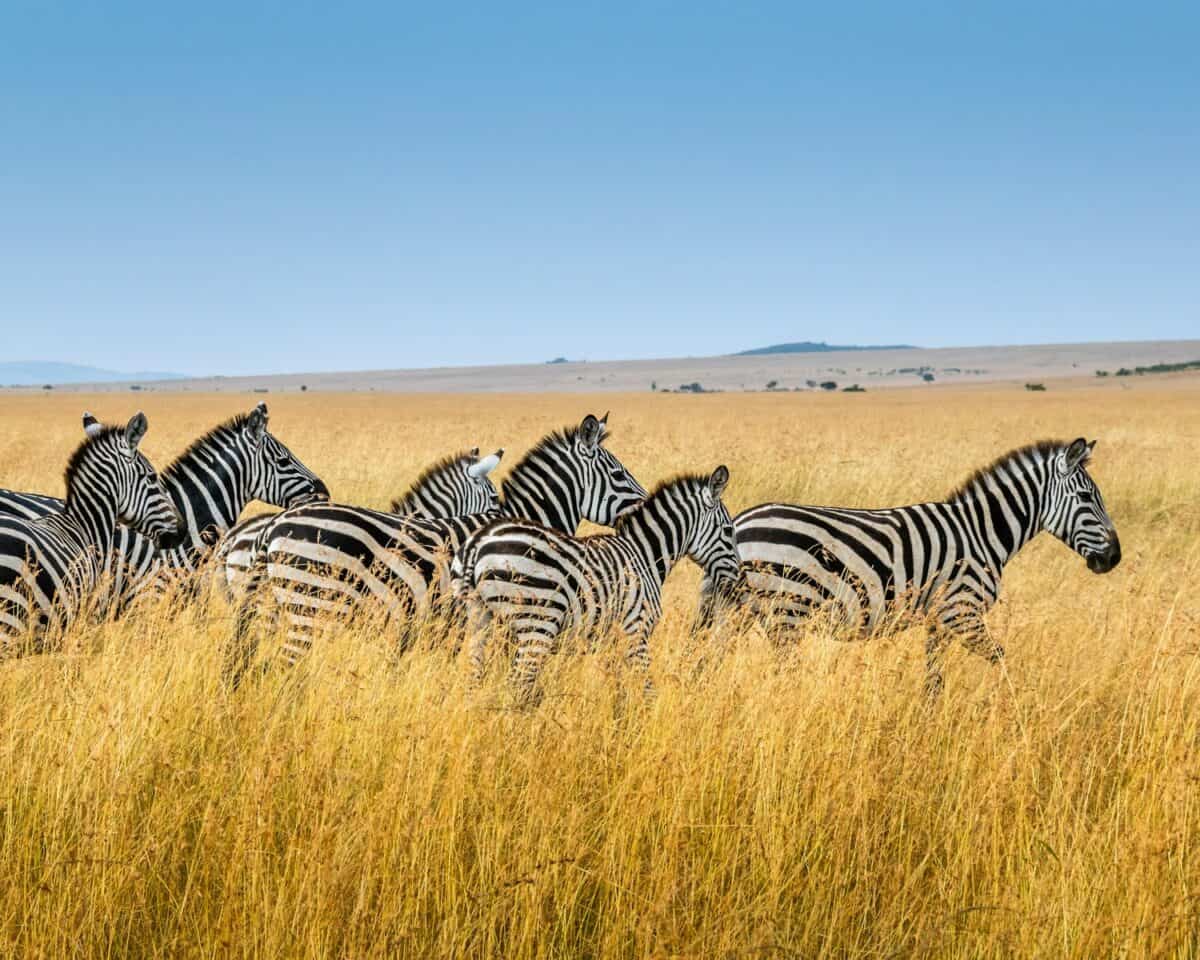
Zebras produce a variety of nasal sounds that convey different levels of alertness or mild concern. The snort—a forceful expulsion of air through the nostrils—often signals moderate alarm or suspicion. Unlike the more urgent bark, snorts typically indicate that a zebra has detected something unusual but not immediately threatening. These sounds may serve as low-level alerts that increase collective vigilance without triggering panic or flight responses in the herd.
Softer snuffling sounds occur during exploratory behavior, especially when zebras investigate new objects or unfamiliar scents in their environment. These quiet, rhythmic exhalations help zebras gather olfactory information while simultaneously communicating their investigative state to nearby herd members. Interestingly, snorts and snuffles increase in frequency when zebras encounter novel situations, suggesting they function as part of a broader communication system that helps coordinate group responses to environmental uncertainty. Young zebras often mimic these sounds from adults, learning appropriate cautiousness through acoustic modeling.
Brays and Roars: Dominance and Territorial Calls

Male zebras, particularly stallions defending territories or harems, produce loud, resonant calls known as brays or roars. These powerful vocalizations serve multiple purposes in male competition and territorial defense. The zebra bray is a multi-component call beginning with inhalatory sounds followed by a series of loud, harsh exhalations that can carry over significant distances across the savanna. Acoustic analysis reveals that these calls contain honest indicators of body size and condition, allowing rivals to assess each other’s fighting potential without direct confrontation.
During aggressive encounters, stallions increase the rate and intensity of their brays, often accompanying these vocalizations with visual displays like head-tossing and pawing the ground. Long-term studies of plains zebra populations have documented that stallions with deeper, more resonant brays typically maintain larger harems and better territories, suggesting these acoustic signals play an important role in sexual selection. Interestingly, mountain zebras produce more complex territorial calls than plains zebras, potentially reflecting their adaptation to more acoustically challenging mountainous habitats where sound transmission differs from open grasslands.
Mother-Foal Communication
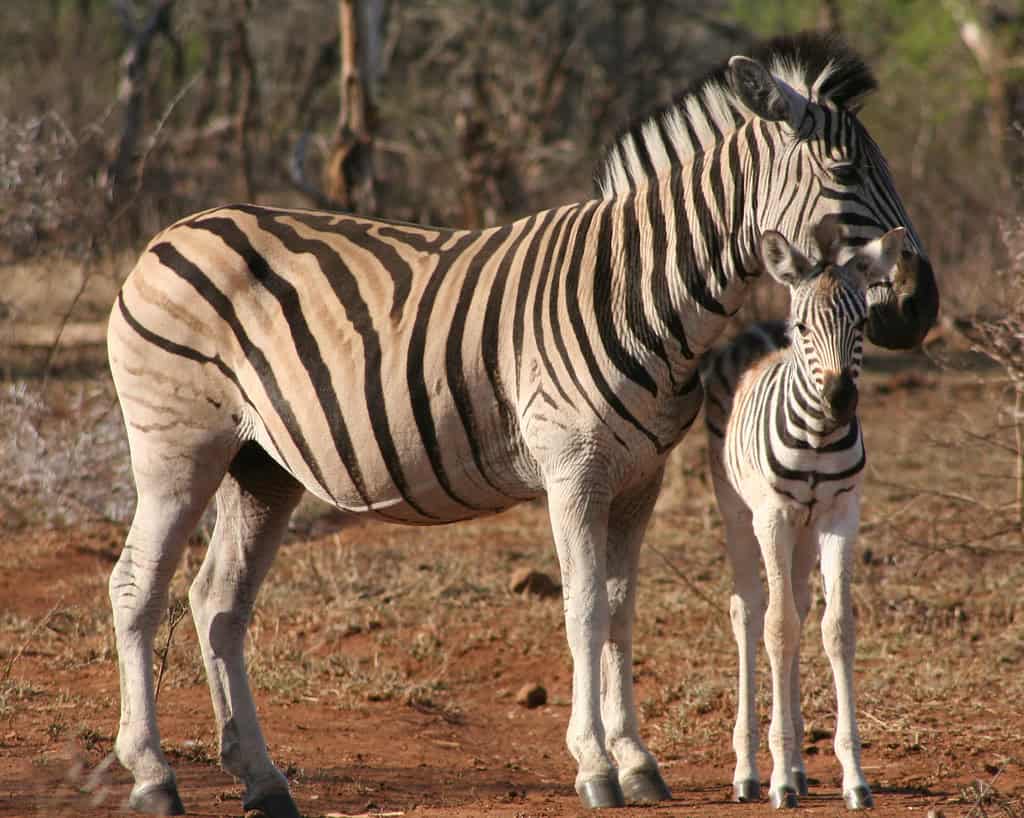
The vocal relationship between zebra mothers and their offspring represents one of the most sophisticated aspects of zebra communication. From birth, foals produce distinctive “mewing” calls that help establish vocal recognition with their mothers. These high-pitched, tonal sounds are individually unique, allowing mothers to identify their foals in the acoustic environment of a large herd. Within just hours of birth, zebra mothers and foals develop a reciprocal vocal recognition system that becomes increasingly refined during the first weeks of life.
As foals develop, their vocal repertoire expands to include “distress calls”—loud, piercing vocalizations produced when separated from their mothers or facing perceived threats. These calls trigger strong protective responses from mothers and often from other herd members as well. Research using spectrographic analysis has shown that these infant distress calls contain acoustic parameters that convey information about the foal’s identity, age, and even the nature of the distress. This sophisticated mother-infant communication system highlights the importance of vocal learning in zebra social development and reflects the selective pressures of raising young in predator-rich environments.
Vocalizations During Conflict and Play

Zebras produce distinctive vocalizations during both serious conflicts and playful interactions. During aggressive encounters, they emit harsh, rasping “squeal-snorts” that signal aggression and threat. These sounds typically accompany physical displays like biting attempts, kicks, or aggressive chases. The acoustic structure of these calls contains abrupt frequency shifts and nonlinear acoustic phenomena that make them particularly attention-grabbing and difficult to ignore—characteristics shared with alarm calls across many mammalian species.
In contrast, during play sessions, particularly among young zebras, softer, rhythmic vocalizations occur that acoustic researchers describe as “play calls.” These sounds share some structural similarities with aggressive vocalizations but at reduced intensity and with distinctive modulation patterns that signal non-threatening intent. Juvenile zebras appear to use these specialized vocalizations to maintain the playful context of their interactions, preventing play-fighting from escalating into genuine aggression. This vocal play-signaling represents a sophisticated form of meta-communication (communication about communication) that facilitates important social learning and physical development without risking serious injury.
Differences Between Zebra Species
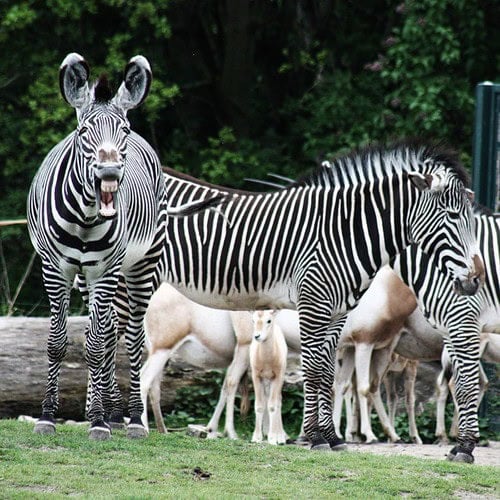
While the three zebra species share many vocal characteristics, research has identified notable differences in their acoustic communication systems that reflect their distinct social structures and ecological niches. The plains zebra, which lives in stable family groups within larger herds, has the most extensive repertoire of social contact calls that help maintain group cohesion in these complex social environments. Their frequent exchange of soft contact calls helps preserve the intricate social bonds that characterize their family-based society.
Grevy’s zebras, which have a more fluid social structure where females don’t form permanent bonds with males, produce fewer affiliative vocalizations but have more elaborate territorial calls among competing males. Mountain zebras, adapted to more rugged and acoustically complex environments, have developed calls with specific frequency ranges that transmit effectively through their rocky habitat. These differences highlight how vocal communication has evolved to match each species’ particular ecological challenges and social requirements, providing a fascinating example of how environmental pressures shape communication systems.
The Acoustic Ecology of Zebra Calls
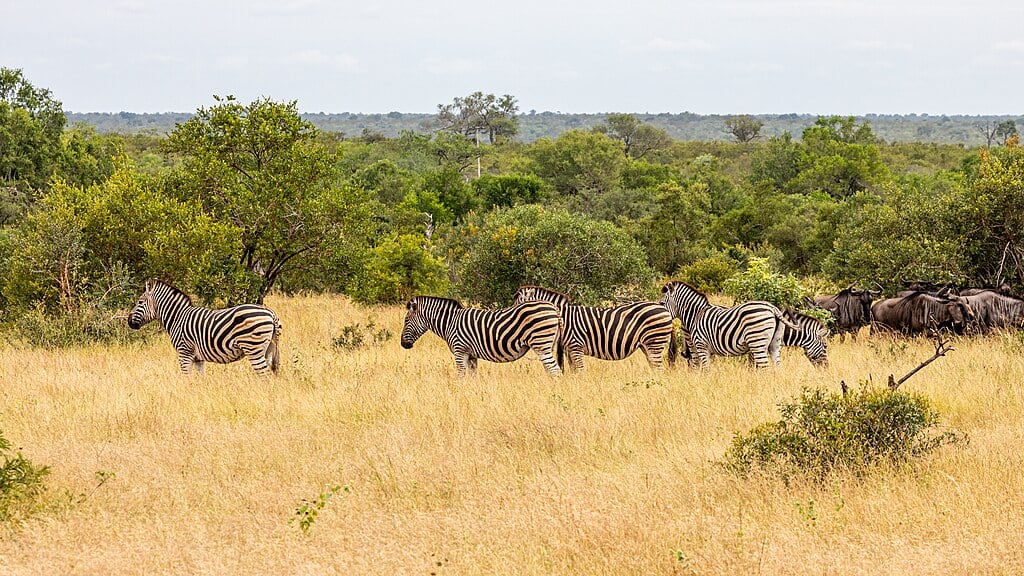
The effectiveness of zebra vocalizations is intimately tied to the acoustic properties of their natural habitats. Savanna environments present unique challenges and opportunities for sound transmission, with factors like wind, vegetation density, ambient noise, and daily temperature fluctuations all affecting how far and clearly zebra calls can travel. Research in bioacoustics has revealed that zebras adjust their calling behavior in response to these environmental variables, often vocalizing more frequently during dawn and dusk when atmospheric conditions favor sound propagation across the savanna.
Different zebra vocalizations exploit different acoustic channels, with alarm calls utilizing high-frequency components that propagate directionally and contact calls employing lower frequencies that travel further but provide less precise location information. During the rainy season, when vegetation becomes denser and visual communication is more limited, zebras typically increase their vocal activity. They also display temporal partitioning of their vocal behavior, producing different types of calls during different times of day to maximize transmission effectiveness. This sophisticated adaptation to the acoustic environment demonstrates the evolutionary refinement of zebra communication systems over millions of years.
Vocal Learning and Development in Zebras

Unlike some mammals that are born with a fixed vocal repertoire, zebras show evidence of vocal learning and development throughout their lives. Young foals begin with a limited set of innate calls but gradually acquire the full adult vocal repertoire through a combination of maturation and social learning. Researchers studying captive zebra populations have documented how juveniles initially produce imperfect versions of adult calls that become increasingly refined through practice and feedback from social interactions.
This vocal development is particularly evident in male zebras, who must master the complex territorial brays necessary for successful reproduction. Young stallions can be observed practicing these calls, gradually developing the proper resonance and timing. Interestingly, there is some evidence of regional “dialects” in zebra vocalizations, with subtle differences in call structure between geographically separated populations of the same species. These findings suggest that cultural transmission may play a role in shaping zebra vocal behavior, adding another layer of complexity to our understanding of these remarkable animals’ communication systems.
Conservation Implications of Zebra Vocalizations
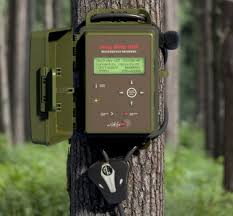
Understanding zebra vocalizations has important implications for conservation efforts. Acoustic monitoring using automated recording devices allows researchers to track zebra populations and their movements without direct observation, which can be particularly valuable in remote or dangerous areas. The distinctive nature of zebra calls, especially the loud territorial brays of stallions, makes them ideal candidates for such non-invasive monitoring. By analyzing calling patterns and rates, scientists can gather data about population density, breeding activity, and even stress levels in response to human disturbance or habitat changes.
Vocal behavior can also serve as an early warning system for conservation concerns. Changes in calling patterns—such as increased alarm calls or decreased social vocalizations—may indicate emerging threats before they become visible through traditional population surveys. For critically endangered Grevy’s zebras, whose population has declined by over 75% in recent decades, acoustic monitoring provides a cost-effective tool for conservation assessment. Additionally, understanding how infrastructure development and noise pollution affect zebra communication can help design wildlife corridors and protected areas that preserve not just physical habitat but also the acoustic environment necessary for effective zebra social functioning.
The rich vocal world of zebras reveals a sophisticated communication system that has evolved to meet the complex challenges of savanna life. Far from being simple, stereotyped sounds, zebra vocalizations represent a nuanced language that conveys detailed information about identity, emotional state, environmental conditions, and social relationships. This acoustic communication system complements their visual signals and plays an essential role in maintaining herd cohesion, coordinating responses to predators, and facilitating the complex social dynamics that characterize zebra society.
As technology advances, allowing for more detailed analysis of animal vocalizations, our understanding of zebra communication continues to deepen. Future research using artificial intelligence to decode subtle patterns in zebra calls promises to reveal even more about these remarkable animals’ inner lives and social intelligence. By appreciating the complexity and importance of zebra vocalizations, we gain not only scientific knowledge but also a greater respect for these iconic African mammals whose communication abilities have been underestimated for too long. In the symphonic landscape of the African savanna, the voices of zebras contribute a distinctive and vital melody to the rich acoustic tapestry of one of Earth’s most spectacular ecosystems.
- The Coldest Town in America—And How People Survive There - August 9, 2025
- How Some Birds “Steal” Parenting Duties From Others - August 9, 2025
- 12 Deep-Sea Creatures You Won’t Believe Exist - August 9, 2025

